Writing a non-fiction book can be life-changing for you – and also for your readers. So you want your book to be the best it can possibly be.
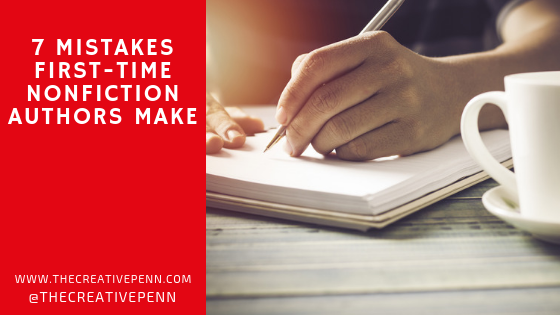 I've now written 10 non-fiction books, including How to Write a Non-Fiction Book: Turn Your Knowledge into Words, and I know how difficult it can be to get your manuscript right.
I've now written 10 non-fiction books, including How to Write a Non-Fiction Book: Turn Your Knowledge into Words, and I know how difficult it can be to get your manuscript right.
In today's article, Boni Wagner-Stafford explains some of the mistakes that new non-fiction writers make – and how to avoid them.
It’s a big deal to begin writing a nonfiction book when you haven’t done it before. There’s a lot to learn and it is a ton of work. You can make it easier on yourself by avoiding these seven mistakes first-time nonfiction authors make.
1. Failing to identify your ‘why’
The biggest mistake first-time nonfiction authors make is in failing to identify why they want to write the book in the first place. This is a foundational issue that affects every step in the writing and production processes.
What’s your motivation for taking on a big project like writing a book? What purpose is the book going to serve, both for you and your readers?
Wanting to publish a bestseller, or to become rich and famous, is not the answer I’m after here. Something needs to drive you.
Cynthia Barlow, a dear friend and respected author of three nonfiction books, including a memoir she wrote in 2012 and published in 2013, says it well:
“In hindsight, had I had any hopes of a bestseller, I never would have a) started it, b) finished it or c) published it, because if you’re going to spend endless time writing the damn thing, you may as well realize how much work and time and effort and focus and patience and determination it takes to see it through to publication. You need a fire in your belly.”
It doesn’t matter what your reason is, your personal or professional why, as long as you know what it is.
Your why leads to your objective, which is what you hope to accomplish through writing and publishing your book, and together they inform the purpose of your book, the approach you take in structuring and writing, and how you market your book.
2. Failing to identify the reader
You cannot write a good nonfiction book without first identifying who your reader is. You want a narrow definition, not the sort of “this book will be for everyone, everywhere” mistake that most newbie nonfiction authors make.
It may seem counterintuitive, but the more specific you can be as you identify your reader, the better you’ll be able to focus the content you’re creating. And the more effective your marketing efforts will be.
Let’s take, as an example, a book I edited on for David Rhodd, a Canadian mortgage broker and investment advisor. His book is about using the equity in your home to generate cash flow and build equity.
In the draft he provided when we started working together, he said that he wanted his book to appeal to the widest possible audience. People in Canada, the U.S., new homeowners, renters hoping to own a home one day, and those with several investment properties already and well on their way to financial independence.
Think about what this would look like for a moment. Any section that talked about Canadian investment rules would alienate the U.S. audience and vice versa. Anything designed to encourage the renter to save up to buy a home would alienate the more established homeowner who already has some investment properties.
 After working it through with him, David agreed that his ideal reader was the first-time homeowner working paycheque to paycheque, struggling to cover the mortgage and other living expenses, who dreamed of one day becoming financially independent.
After working it through with him, David agreed that his ideal reader was the first-time homeowner working paycheque to paycheque, struggling to cover the mortgage and other living expenses, who dreamed of one day becoming financially independent.
This freed David up from feeling like he needed to address every issue and angle related to investing and home ownership in two countries. His book is much better for it.
3. Not understanding story structure
Writing a book is not like writing in a diary. It’s not like talking to a friend. And it’s not just a free-flowing capture of bouncing thoughts, though we’ve read manuscript submissions that fit into all three of these categories.
Some people, first-time nonfiction authors included, seem to think nonfiction doesn’t require a narrative arc. Non-fiction is exactly like fiction in that they both involve storytelling.
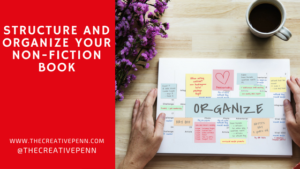 Whether you’re telling someone how to run a meeting or you’re creating an urban fantasy, you need a structure for your story. There are different types of story structure, but the most basic is the one we recommend for our novice authors. You’ve likely heard of it: the three-part structure, characterized by the beginning, middle, and end.
Whether you’re telling someone how to run a meeting or you’re creating an urban fantasy, you need a structure for your story. There are different types of story structure, but the most basic is the one we recommend for our novice authors. You’ve likely heard of it: the three-part structure, characterized by the beginning, middle, and end.
Whether you’re writing true crime, memoir, self-help, business, or any other kind of nonfiction, your three-part story structure should look like this:
- What Was: the way things used to be.
- What Happened: the event or situation that changed everything.
- What Is: what things are like now after the change.
4. Writing what you want to say instead of what the reader needs to know
Sometimes you just want to write what you have to say. And that’s fine if your tome is going to remain locked in the top drawer.
As an author, you have a duty to yourself as well as your reader. If you hope to publish a book that will connect and resonate with readers, of serving a purpose higher than self-indulgence, then you must look beyond what you want to say and write what the reader needs to know.
 In order to write what the reader needs to know, you need to have first identified your why and your reader.
In order to write what the reader needs to know, you need to have first identified your why and your reader.
See how interconnected this all is?
5. Not using dialogue
Dialogue in nonfiction? You bet.
Many first-time nonfiction authors mistakenly believe that there is no place in their nonfiction for dialogue because they don’t have first-hand knowledge of how the conversation actually went.
I’ve had this discussion more than once.
“It’s true,” I acknowledge, “that writing nonfiction means you have a responsibility to be truthful. To relay fact.”
I see the look of satisfaction on the author’s face on the computer screen in front of me — I do my coaching calls via video conference.
“That’s right,” my client says, her voice dripping with vindication. “I can’t write the dialogue because I wasn’t there.”
I continue, bursting their bubble. “You also have a responsibility to craft a compelling story for the reader. And that is accomplished by using dialogue, which helps you set the scene and to show more than you tell.”
Dialogue helps the reader experience your story. Whether you’re describing an exchange in a meeting or a devastating heart-to-heart between a dying mother and her son, dialogue can—and should—feature in the pages of your nonfiction.
6. Not choosing a style guide or being consistent with formatting
What’s a style guide you say? Aha.
A style guide, or manual of style, is a set of principles to help you produce consistent writing. Refer to a style guide to help you decide about issues like hyphenation and punctuation in the same way you’d check a dictionary for the meaning of words.
It may include recommendations for sentence construction, or whether and when to choose passive voice. Some include guidelines on the type of words to use to improve inclusivity and avoid inadvertent racism, sexism, homophobia and other forms of discrimination.
There are three levels of style guide: the style sheet, style manual, or full-fledged style guide.
- A style sheet is a fairly brief list of specific tips drawn up by an author for the manuscript they’re working on.
- A style manual is a more detailed version of the style sheet, often created by traditional publishers or organizations that produce a lot of editorial material and obviously need to be consistent.
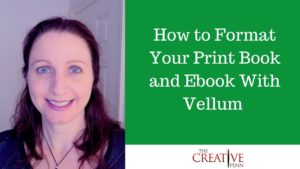 A formal manual of style is a comprehensive reference book that covers every stylistic decision you could think of. Examples include the Chicago Manual of Style and The Elements of Style, also known as “Strunk and White,” used in the United States.
A formal manual of style is a comprehensive reference book that covers every stylistic decision you could think of. Examples include the Chicago Manual of Style and The Elements of Style, also known as “Strunk and White,” used in the United States.
How do you choose which style guide is right for you and your book? It’s back to that reader identification step again: choose a style guide suited to the audience you’re writing for.
Click here for a list of free and premium tools that you can use for formatting.
7. Publishing without hiring an editor
 For many of us, writing is a deliciously solo endeavour. And, especially when starting out, it can be downright uncomfortable to share your writing with someone else.
For many of us, writing is a deliciously solo endeavour. And, especially when starting out, it can be downright uncomfortable to share your writing with someone else.
The first time you receive the red-ink markup from your editor can be devastating.
I get it. I’m working with an author who finds it so emotionally disruptive that she ends up in a funk for days, unable to write another thing until the feeling passes.
She and I have come to an understanding. When I send back to her my edited work, I send a clean copy, with all the changes accepted. That way, what she sees is closer to a finished version and not a scarred piece of crap writing (which it isn’t, it’s just how the markup makes her feel).
That’s not really what I’m talking about here though. I’m talking about the first-time nonfiction author who writes the full first draft, has a look over it themselves a second time, making a few changes, and then goes ahead and uploads the book to Amazon.
There’s also the well-meaning first-time author who asks family and friends to review their manuscript first. Better, but still not great.
While feedback from a layperson is better than no feedback at all, you’re likely to find yourself wrestling with matters of preference and taste rather than editorial feedback that will improve the quality of your book.
Of course, as a publisher, author coach, and editor, you know I’m going to make the case for hiring a professional editor. Editing is so much more than correcting typos. It helps with focus, flow, structure, voice, tone, accuracy, readability, and much more.
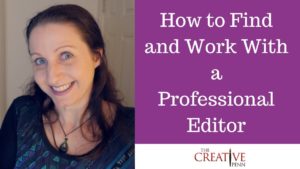 Click here for a list of recommended editors as well as information about the process, timing, and costs. Joanna has also produced a video tutorial on how to find and work with a professional editor here.
Click here for a list of recommended editors as well as information about the process, timing, and costs. Joanna has also produced a video tutorial on how to find and work with a professional editor here.
Of course, there are other mistakes first-time nonfiction authors make, such as passive writing, mixing POV (point of view), time-hopping, and telling rather than showing. But by addressing the seven mistakes listed above you’ll be doing yourself, your book, and your reader a big favour.
Are you planning to write a nonfiction book? Please leave your thoughts or questions below and join the conversation.
 Boni Wagner-Stafford is a nonfiction author coach, writer, ghostwriter, and editor. She’s an award-winning former journalist and also led public-sector teams in media relations, issues management, and strategic communications planning.
Boni Wagner-Stafford is a nonfiction author coach, writer, ghostwriter, and editor. She’s an award-winning former journalist and also led public-sector teams in media relations, issues management, and strategic communications planning.
Boni has been at the controls of a helicopter, loves backcountry canoeing, once jumped from an airplane, sang on stage with Andrea Bocelli in a backup chorus, and grew up skiing Canada’s Rocky Mountains. She resides full-time on her 40’ sailboat, Ingenium, unless she’s housesitting in the South of France.
[House photo courtesy Scott Webb and Unsplash.]
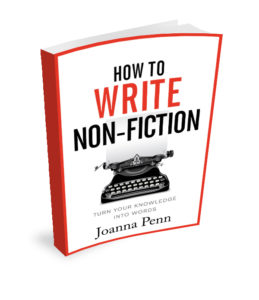
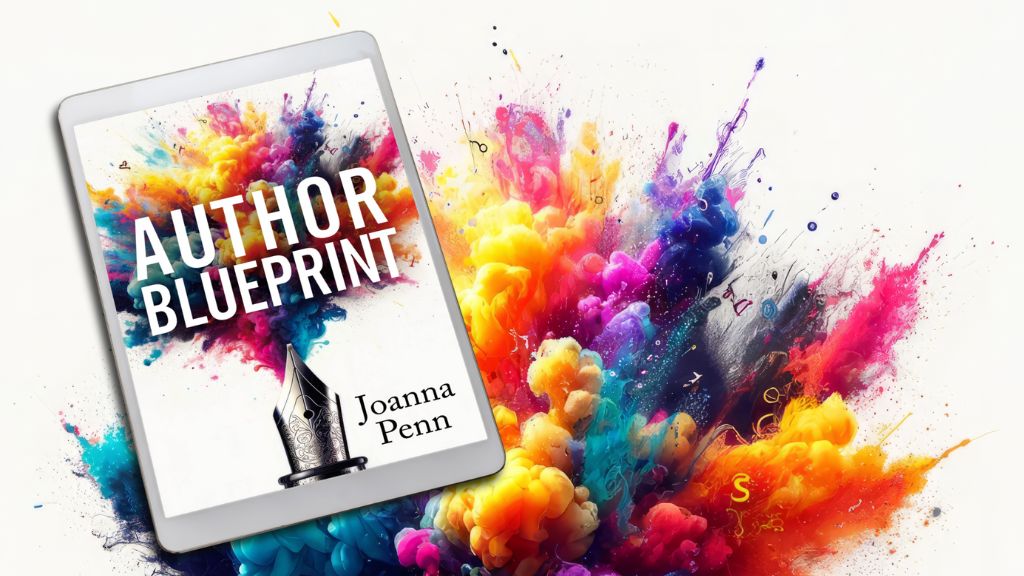
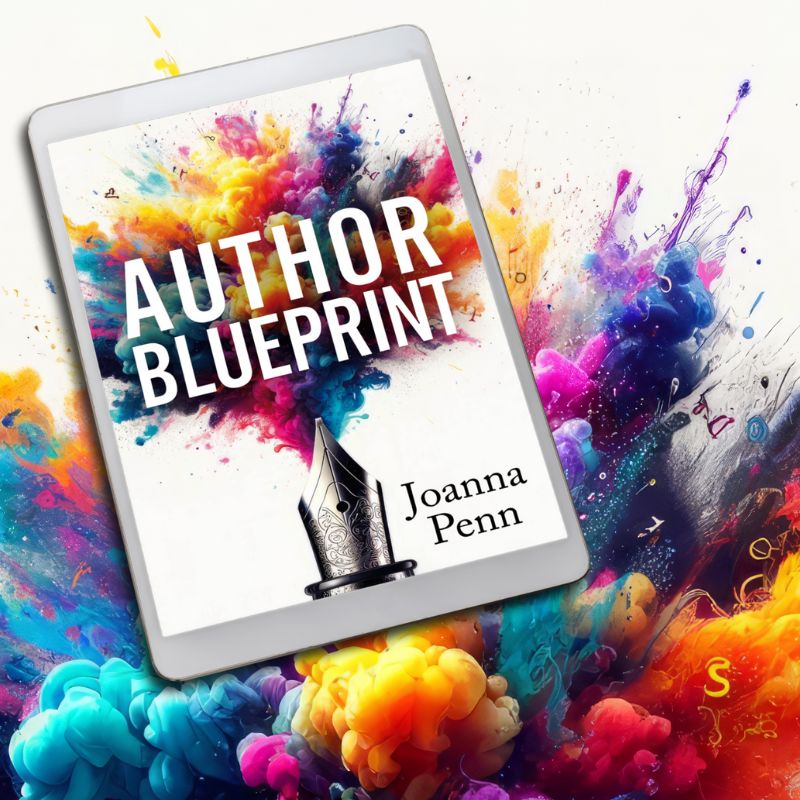
I’m researching for my book about a Renaissance artist (15th & 16th centuries) my problem is about copyright. A couple of books I own are from 1800’s and 1900’s and they have some really good illustrations and also some images which I believe to be prints (they are listed as ‘Plates’ whilst the other illustrations are prefixed by ‘from a’. The paper is of printmaking quality and has the definite indentation of a print. They also have a tissue paper covers. What do you think about my making reproductions from these books for my own illustrations?
The artist’s work might be out of copyright but the book you are suggesting taking it from might not be. I’d suggest you look for sources online where you can get royalty free/ creative commons versions of the art. There are lots of potential sources – try http://www.openculture.com/ for starters.
I got my book back for proofing. It should be out in a month or two. I need to make changes, which include the insertion of a photograph, and back cover matter.
And, for some unknown reason, the publisher did not include some well-written endorsements by public will-known figures that can help promote the book. Each of these endorsements are lengthy but they sparkle and should give the book a boost. Yhe two endorsements would occupy one whole who le page.
Is it too late at this stage to make these kinds of changes.
(website is pending)
Hey there… Thank you for this beautiful article. I am writing a nonfiction self help kinda book and I have a doubt. How should I address the reader? Should I use “you” marking the reader alone… Or should I include myself and write “we”. For example. “You can do it”. Which would best suit… You or we…. Please help me. Thanks in advance.
I have the exact same question!!!!
I didn’t see anything on asking permission even if the names have been changed for people you may mention in your nonfiction book. It looks like my ex who stalked me for 6 years wrote a tell all about his life (with names changed) and I’m sure he has added me in. I’m not sure what to do if anything, it’s been years since I’ve even seen him so what are your thoughts on this? If it’s bad or embarrassing should I leave it alone?
This is a difficult area, but you’d need to consult a legal professional about this if it is worrying you.
I’m writing my first non-fiction book, and now i’m slowly trying to get it put together but having a bit of a problem trying to come about how to put it together to make it sound like a good one.
I’m a first time author essentially writing a memoir of the many ups and downs of my life primarily aimed for the attention of young female readers or women in general, who for the sake of love, failed to seek their lifetime goals or objectives and made other mistakes along the way. In feeling compelled for a number of years now to write and perhaps be an inspiration of sort, my main concern at this stage is simply whether to use my actual name or a pseudonym and whether I need to ask permission of any and all people mentioned in my book despite using first names only or ‘slight changes to the names” i.e. referring to an Enrico (in Italian) as Henry instead? While I’ve exerted caution and refrained from discriminatory or derogatory words or phrases as related to any individual, I would be concerned about libel charges. I guess my legal background is taking its toll on me. Your response in this regard is needed and appreciated. Thank you.
Check out Helen Sedwick’s book The Self-Publishers Legal Handbook as she covers this. All the best.
Can you help me with a POV question? Should I use first or third person for a handbook I’ve written of leadership and management tools for wildlife conservancies? The tools are distinct and stand-alone. There’s no reader journey through the handbook. The purpose is for the reader to dip in and pick tools as they need them.
Thanks
The book I am trying to begin is a read along companion to a famous series of texts. I cannot find anything anywhere that is alike to what I want to write and I wonder if it is because my idea uses copyrighted text as well as my own writing. Basically, imagine the entire text of a book inside of and next to my book so that as it is read, the commentary is side by side, and moving along with the story. Is this a crazy idea?
It will depend on the text you want to use e.g. if it is the King James Bible, you’d be fine as that is public domain – but you couldn’t use a more modern translation as that would be copyrighted to whichever company did the translation. You also really need to consider the market. Basically, I’d suggest more research before you make a decision!
Thank you for your article! I am particularly interested in your comments about using dialogue in non-fiction. I am currently writing my second non-fiction and will be interviewing people about their experiences. Should I strive to get actual quotes related to their story as it happened, or should the dialogue just be quoting what they say during the interview? Thanks so much!
Hi Laurie, check out this interview, I think it will be useful on this topic: https://www.thecreativepenn.com/2020/08/24/write-narrative-non-fiction/
Im writing a book about my crazy hilarious moments in life, my youth was a scream and so much fun, and taking the mickey out of the rich and famous over the years, traveling the world, fast cars, big boats and women, not forgetting big business deals both here (Australia) and abroad that brought some sales people to tears.
I need to have a set up plan, punctuation, and selling it online, what book is best for me?.
In terms of punctuation, I’d suggest working with an editor – http://www.TheCreativePenn.com/editors
For publishing, check out Successful Self-Publishing – http://www.thecreativepenn.com/successfulselfpublishing/
Hi Joanna,
Thanks for this very informative piece! I’m writing a self help book based on science, personal experiences, and the experiences of others. I’m therefore offering specific recommendations to the reader. I’m struggling with whether I should use “I” or “we” in making the recommendations. What would you recommend?
Personally, I talk about my experiences as “I” and address the reader as “you,” but only you can decide what makes sense for your book.
Hi Joanna
I am writing book about a sudden injury that put my mom in several senior care facilities and the issue we ran into during these years that were not good as well as interactions with the corporate heads of these places and want to combine the personal story with suggestions about what to know and how to handle these situations. Is it better to tell the story and weave in the information along with the issues that occurred or make the first part the story and the second half the factual and informing information? Any thoughts would be great.
Thanks
pam
Hi, there. Thanks for the great information.
I have what seems to be a problem with point 2 above. I am almost finished “The fear free mind” which is a (proven) set of psychodynamic techniques to permanently remove fear from every aspect of life.
I genuinely believe that the target audience is clearly “30+ year olds who might like to reduce the amount of fear they experience”.
How can I say this to a publisher? It will sound like ” I have no clue what a target audience is”.
Any advice would be greatly appreciated.
Also, in the spirit of shameless self promotion, you can read the opening section here if you like:
(I just got a spam warning error: maybe if I take out the link it will post. It’s deafInOneEyeDotCom)
Thanks in advance,
e.
Good afternoon. I’ve had it on my heart to write my life story for a long time now. It is what I hope to be a very compelling, raw and connect to the heart story, and a very difficult one that I’ve struggled with sharing publicly. It is a story of several types of abuse including, and from specifically two people that have afflicted me in very similiar ways, but it is also a story about pain from sexual assault and betrayal from family and family friends. It does involve some areas of religion/spirituality that are a part of who and what I am and have been since I was a little girl. This book of non-fiction that I want to write will be geared towards people that have been abused by parents, belittled and hurt by their spouse, rape victims especially from people that they know, and overcoming the struggles and the pain of it all through faith and forgiveness. Among the so many questions I have about how to put this together is this one: how do I categorize this, I guess I’m wondering who my target audience will be? I know this is going to be a process; I have written a couple of stories (non-published) that are definitely religious/spiritually themed, but what I plan on writing involves so much that I believe will help a lot of people that have also struggled through similiar things such as what I have (and still continue) to experience. Any advice would be appreciated.
I have written a daily Blog-style account covering March 27th 2020 to March 27th 2022. It is 588 pages long with a 340,000 word count. I would describe it is a pot pourri of events, thoughts, memories, opinions, references and much more. It is a stream of tangents of the mind! Writing was a way of dealing with the pandemic by expanding feelings, reflections and a need to record. My question is, “What do I do with the manuscript now?” I constantly re-read, edit etc. Part of me wants to retain it and part feels that would be selfish. My wife says it is akin to the end of pregnancy and knowing there will be separation trauma – of course, I wouldn’t know. Any help or thoughts at this stage would be invaluable. Thank you in advance.
If you want to turn it into a book, you need to edit it!
Lots of help in my book on How to Write Non-Fiction — https://www.thecreativepenn.com/write-non-fiction-book/
Joanna,
My non-fiction effort is a first time effort, but to be as I would like it to be read is, the Feelings left behind, and a few damp handkerchiefs. Some readers look at the verse and say, “that is too miserable for me,” while other read it and remark, “Oh how lovely it was reading that”, see what I mean, it’s the feelings of the reader and how they react, that makes me write in this style.
Most of my non-fiction is all about feelings, as there is so many different feelings in every persons thoughts, especially with the happenings in this world today, and with so many feelings I have attempted to to cover most of them, but they are all very true, especially in my feelings, It would take too long to write them all, but. if after reading this short intro. you think it would be worth a try, I could send you my printed Manuscript for a better idea of my efforts. Failing this, and if it is not worth it, just charge me for the effort of reading it, and I will thank you for that. Geoff.